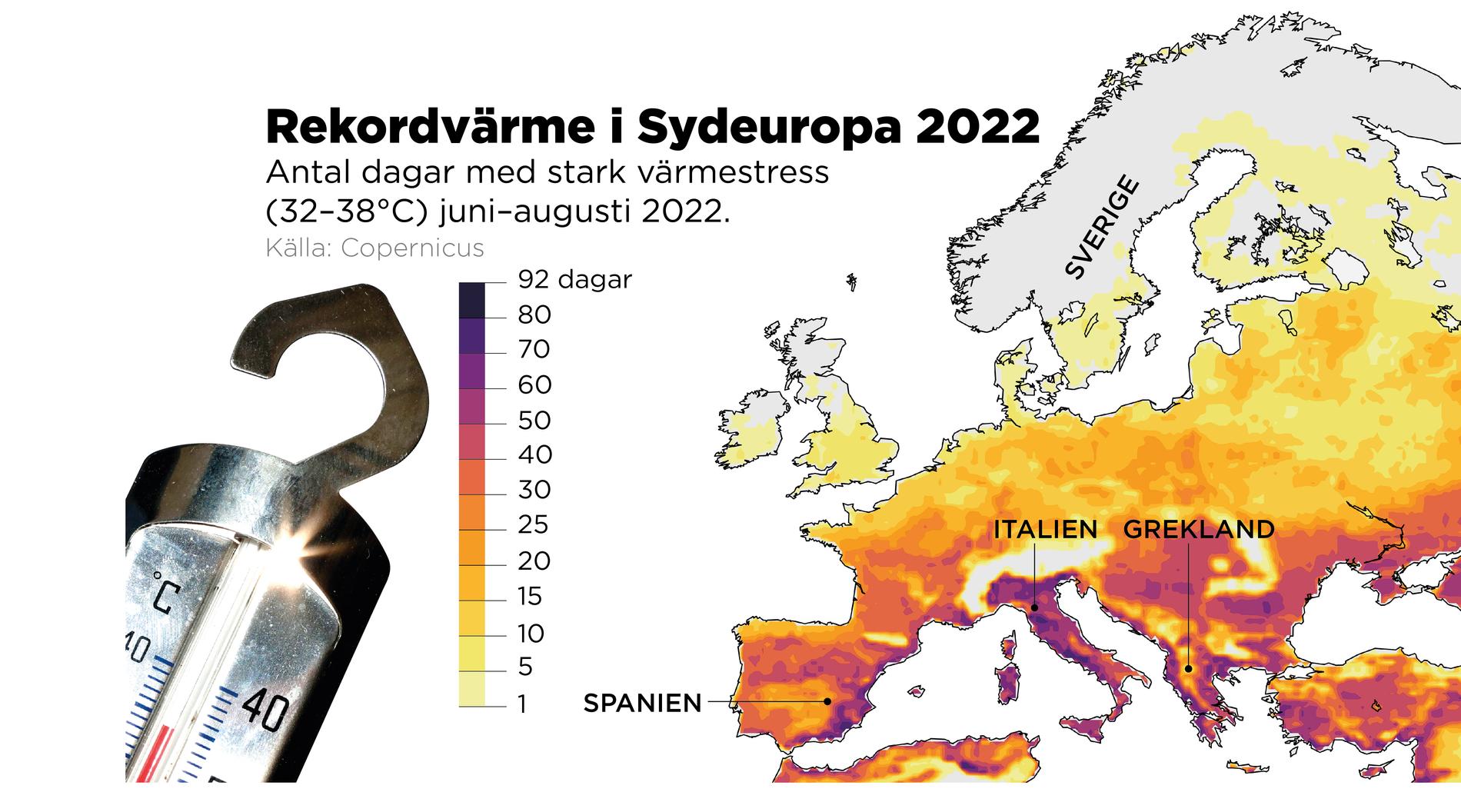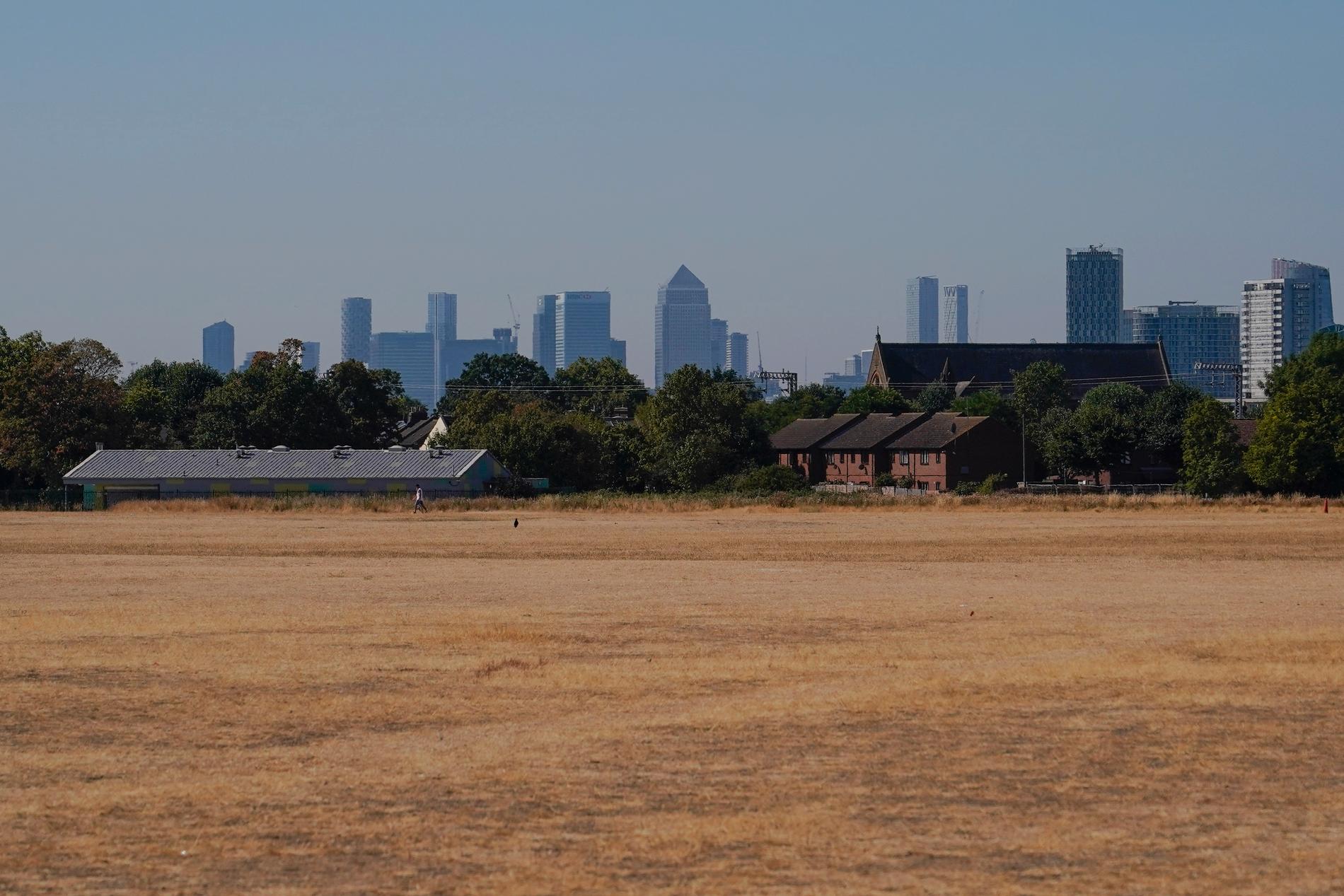By: Petra Hedbom/TT
Published: Today 08.01
Updated: Less than 2 hours ago
During last summer, extensive forest fires ravaged several countries in Europe. Here is a picture from northwestern Spain in mid-July. Photo: Emilio Fraile/Europa Press via AP/TT
NEWS
A record shrinking of glaciers in the European Alps, persistent heat waves and widespread forest fires. The warmer climate continues to affect Europe, according to a new report.
The messages are not cheerful when the Copernicus Climate Change Service today releases its annual report on the state of the European climate (ESOTC). Europe experienced its hottest summer since measurements began and, combined with low rainfall, resulted in a widespread drought.
- Unfortunately, the report contains no surprises, but shows a development that is in line with what we have seen in the last 20 years. It's simply getting warmer, says Gustav Strandberg, research leader and climate scientist at SMHI.
The measurements show that Europe experienced a record number of hours of sunshine in 2022. In addition, carbon dioxide emissions from forest fires during the summer were the highest in 20 years in some countries. This is in addition to the devastation caused by the fires where they spread.
Number of days with strong heat stress (32–38°C) June–August 2022. Photo: Johan Hallnäs/TT
Major effects on Sweden
Globally, the past eight years have been the warmest on record and temperatures in Europe are rising twice as fast as the global average, according to the report. The summer was the hottest on record for Europe, at 1.4 degrees above average.
Although the heat waves are more noticeable in southern Europe, the temperature increases have major consequences for us in the Nordics as well.
- Even if we have a few days with 30 degrees in Sweden, it can cause that. The negative health effects can be great even after a short time with high temperatures, not least for the elderly. We need to be aware of that because it is most likely that there will be more days with extreme heat, says Gustav Strandberg.
Heatwave in the UK Heat wave in Great Britain Photo: Alberto Pezzali / AP
Lack of rain and snow
There was also less snow than normal during the winter of 2021-2022. Many areas experienced up to 30 fewer snow days than average and the drought persisted over spring and summer, which not least affected agriculture with ruined harvests as a result.
Copernicus also collects measurements from other parts of the world and from these the report states that the Svalbard region experienced its hottest summer. There, the average summer temperature in some areas was more than 2.5 degrees above the average values.
Greenland experienced record ice melt during exceptional heat waves in September and the Arctic experienced its sixth warmest year on record since records began. TT:
Are there any glimmers of light?
- No, the climate follows its own laws and rules and as long as the level of greenhouse gases increases, it will continue to change. It is politics and the development of renewable energy sources that must be the bright spots, he say.



Inga kommentarer:
Skicka en kommentar